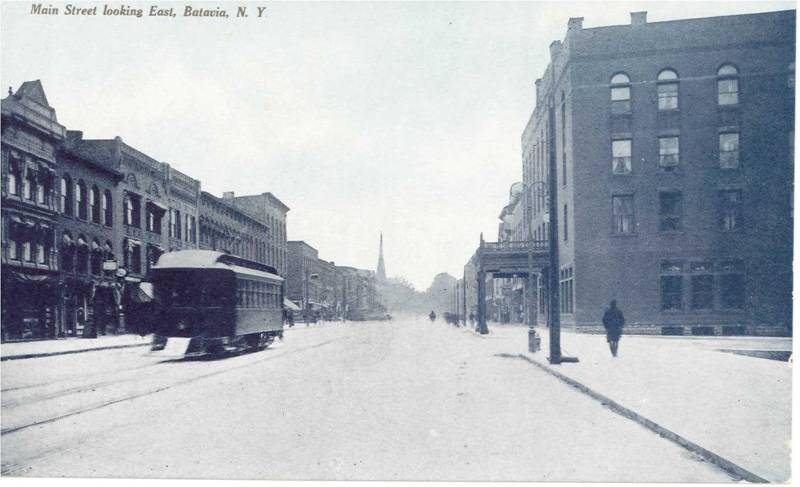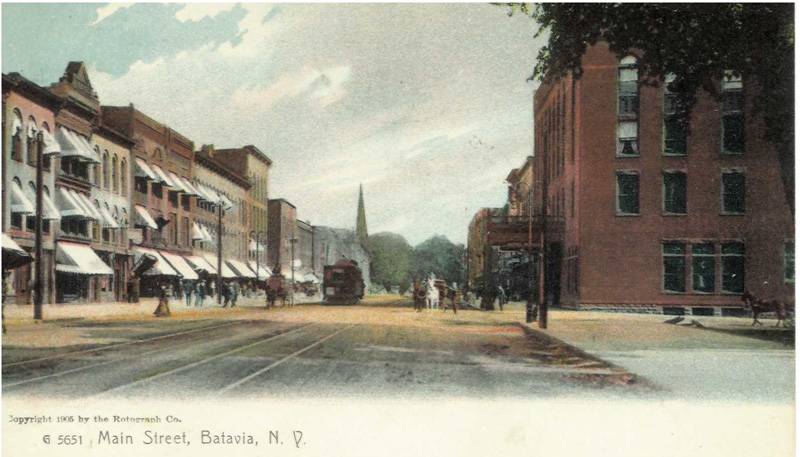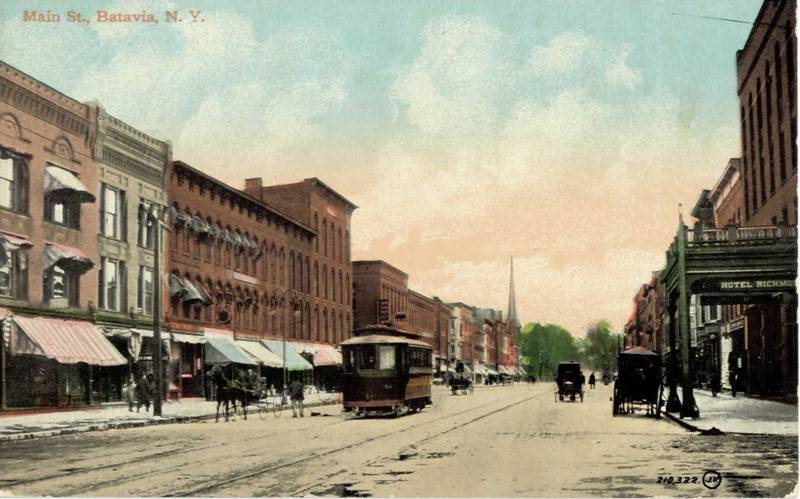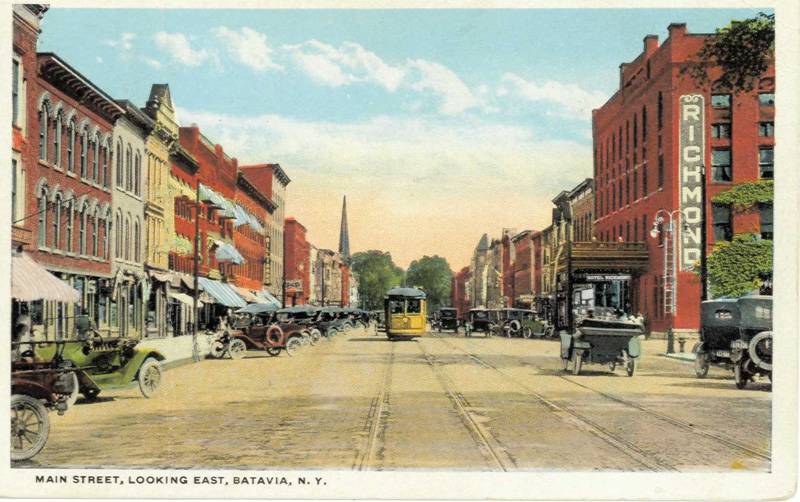HLOM History: The brief ride of the trolley service in Batavia
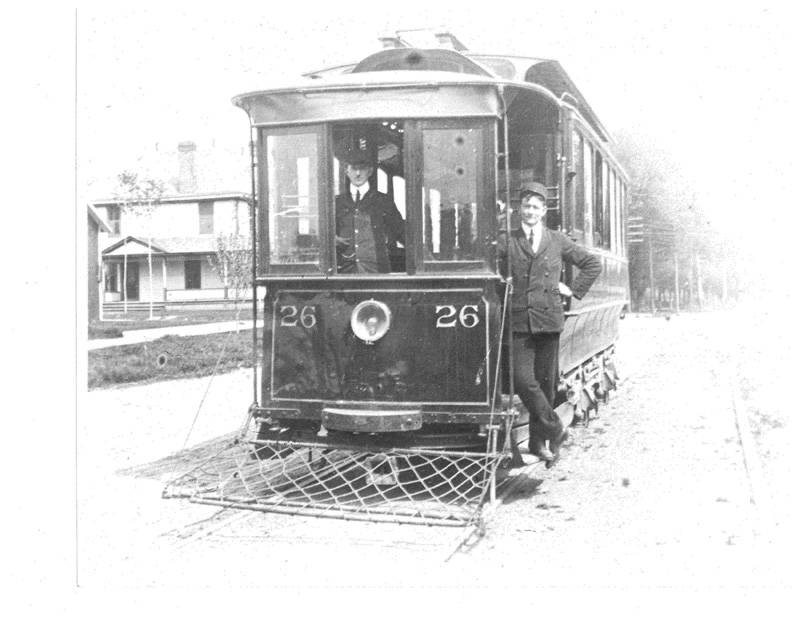
Submitted photo.
Much of Batavia’s growth in the nineteenth and early twentieth century can be attributed to its location as a hub of major transportation systems. This was particularly evident with the passage through the Batavia of several major railway lines.
However, another form of rail transportation through the heart of Batavia, though it existed only for two dozen years, left an impact upon first the village and then the city. The trolley line that ran the extent of Main Street was built as a precursor to Batavia's continued growth and to connect it further to the rapidly growing cities of Buffalo and Rochester at the dawn of the twentieth century.
The trolley line in Batavia was completed in 1903, though it was originally just a small piece of a much larger line.
The Buffalo and Williamsville Company, who built the line, had plans for a line running from Williamsville and Depew to Rochester. They even had talks with investors of further expansion to Medina or Horseshoe Lake, and eventually across New York State. However, the Batavia Main Street line is all that would come to pass.
The trolley was a single track that ran a mile and a half from Clinton Street to the intersection of West Main Street and Lewiston Road. A turnout was also built near Bank Street to allow the trolley cars to pass each other. It officially opened on September 2, 1903, with many of the village aldermen as its first riders. It quickly became the latest marvel in Batavia, and people flocked to ride the trolley, with reports of 3,300 people to board at some point during the first week.
The trolley line's local patrons would soon have issues with its builder, the Buffalo and Williamsville Company.
Though the line had a large number of riders, very little was done to improve the equipment or the quality of the ride.
In 1911, East Main Street residents complained about the noise of the trolley cars, and many riders were less than thrilled with the uncomfortable seats on board. By this point, no effort had been made to add a second line. When some expansion began in 1912, the village aldermen asked the company to pave Main Street, which was never resurfaced after the line was finished. The village officials believed that this was the company’s responsibility.
The disagreement over the paving of Main Street became increasingly hostile. When pressured, the company hinted that they would just close the line altogether. The company would attempt to make good on their threat by applying for a permit to close the trolley line. In response, a commission of local men, including George Wiard and K.B. Mathes, sought out other entities to run it. In 1914, they found a potential buyer in the Storage Battery Company of New York City, but it was deemed soon after that it would be more beneficial if the line was owned and operated by a local company.
A year later, the Batavia Traction Company was created to undertake such a venture. Though the trolleys still ran for another twelve years, there were never funds to make the necessary improvements.
By 1927, the company was losing money, and the whole line was deteriorating beyond repair.
Trolleys were becoming obsolete, replaced by buses, and there was little outside interest in keeping the cable cars going. By the end of the year, the trolley line on Main Street ceased to take Batavians to and from.
Some of the tracks were dug up during the scrap drives in 1943; another part was covered by blacktop in 1947, while the tracks along East Main Street were still there until Route 5 was rebuilt in the 1960s.
